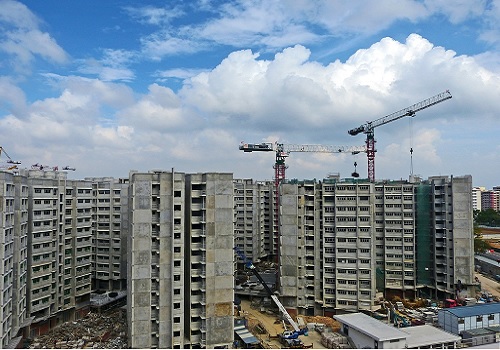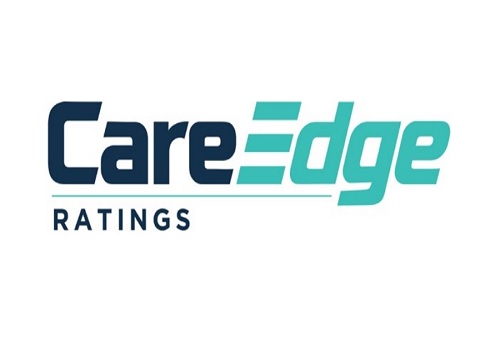The Blue Book 2023 : Putting 10-year cash flows in perspective By Centrum Broking

THE BLUE BOOK
In the third edition of our annual report ‘The Bluebook’, we focus on the two major pillars of growth in India, viz., capex and consumption. Accordingly, we have bifurcated all the companies under our coverage i.e., 102 stocks into two baskets and tried to analyse how these two baskets fared in the last decade. Needless to say, our analysis revolves around fundamentals namely growth, profitability, cash-flows and return ratios over the last 10 years. We look into metrics like track record of growth, margins, working capital trends, OCF, EBIDTA to OCF conversion, capex and acquisition intensity and finally FCF trends, leverage and return ratios.
Our broad philosophy driving this product is that while future is uncertain, past is a good guide to navigate a sector and companies within it. A deep dive in the past 10 years into these companies’ fundamentals and thereby the industry will bring to the fore intrinsic strengths and weaknesses of businesses across various cycles. Such a study is also helping us in spotting any structural changes within the sector early. It also demonstrates managements’ vision and prudence in capital allocation decisions. It helps us in making sense of the varying valuations of companies within and outside the sectors.
In the third edition of Blue Book, our analysis mainly focuses on cash flow, capex and working capital cycle trend over the past decade in consumption driven industries and capex (commodity) driven industries. Sectors such as FMCG, retail, building materials and consumer durables form part of our consumption basket. Sectors such as infrastructure, cement, metals, oil & gas, chemicals and sugar are the key components of our analysis of capex/commodity driven industries.
More importantly we would like to highlight some key trends, (1) over past five years capex intensity is rising for consumption basket led by incremental in-house manufacturing towards building efficiencies, PLI and M&A, while in commodity, rising capex cycle was driven by growing demand and also exports, (2) for the first time we noticed consumption basket saw positive net debt, though it remained steady for commodity sector, (3) we reckon although capex spends remain front ended the asset turn ratio has fallen in last five years, (4) NWC saw declining trend in consumption indicating squeezing of suppliers/credit, while in commodity basket it was driven largely by cement sector – as industry switched to upfront payment, yet metals sector saw reduction in credit period provided to buyers and cut in receivable cycle from govt. entities, and (5) despite steady to improving OCF/FCF conversion we saw declining trend in RoEs across consumption and commodity basket led by pressure on margins and lower asset turn.
Consumption and commodity basket - Key discoveries across various parameters
Rising OCF trend in consumption sectors; uptick in commodity cycle led to sharp rise in OCF in FY21/FY22
In consumption sector, OCF generation has consistently increased, barring a dip in FY22 owing to Covid impact and unabated cost inflation. Building material and FMCG sectors have seen consistent EBITDA to OCF conversion at an average rate of 85% and 77%, respectively over the past decade. However, retail sector’s EBITDA to OCF conversion has improved at a slower pace from 55% over the first 5-year period of FY14-18 to 60% in the recent 5-year period of FY19-23. Consumer durable sector’s EBITDA to OCF conversion has rather weakened from 79% in first 5 years to 72% in recent five years.
The capex driven sectors saw a gradual increase in OCF from FY14-19, but it shot up considerably from FY20-22 owing to high commodity prices. Oil & Gas sector saw highest EBITDA to OCF of 112% over the decade led by radically improved cash flows post price deregulation in FY15. Cement industry had healthy conversion rate of 73% with a sharp increase in OCF since FY20, as the industry focussed on margins through increased realizations. With rising exports, the chemicals sector had healthy conversion rate of 65% over the decade. Infrastructure remains the weakest at 11%. Metals exhibited improvement from 59% in first five years to 70% in recent five years due to sharp cyclical upturn. India witnessed pent up steel demand post Covid which led to sharp jump in steel prices by 16%/50% YoY in FY21/FY22, leading to windfall profits for the sector and OCF rising sharply compared to long term average. Sugar saw depletion from 79% in first five years to 58% in recent five years.
Capex intensity rising both in consumption (M&A, PLI, rising in-house mfg.) and commodity (recovery in industrial capex)
In the consumption sector, the capex was stable during FY14-19 but has seen a noticeable uptick over FY20-23 led by, (1) large M & A activities such as HUVR-Glaxo-CH/V-Wash, ITC-Sunrise, Dabur-Badshah Masala, Crompton-Butterfly, (2) rising in-house manufacturing, (3) capex driven toward improved efficiencies, and (4) PLI linked capacity expansion in products such as air-conditioners.
The commodity sectors have also seen capex recovery led by cement and metals and mining with notable examples of Tata Steel – Rs1,535bn, JSW Steel – Rs922bn and Vedanta – Rs891bn. Oil and Gas sector witnessed strong recovery over last three fiscals. The capex intensity of cement has been high over the past decade led by acquisitions, capacity expansion and investment towards efficiency improvements through WHR. For chemical companies, capex doubled in recent five years (Rs331bn vs. Rs145bn) owing to strong growth in profitability coupled with healthy OCF generation (Rs504bn vs. Rs165bn), led by China+1 opportunity.
Consumption sector saw consistent FCF generation with net debt turning positive first time in FY23; Capex heavy sectors saw bump up in FCF in FY21/FY22 led by commodity up cycle with steady net debt
FCF generation rose consistently, barring a dip in Covid period in FY22. The OCF to FCF conversion of FMCG sector has been exceptionally strong at 80% over the past decade. Consumer durables/retail/building materials have also posted healthy OCF to FCF conversion rates of 49%/42%/37%, respectively. FCF as a % of sales remained strong in FMCG at 15% over the past 10 years, while it is decent for building material/consumer durable/retail at 5%/3%/3%, respectively. However, the leverage has risen in FY23 for the first time over the past 10 years with both net-debt/equity and net-debt/EBITDA turning positive.
The FCF in commodity driven industries has largely remained low/negative over the past 10 years, barring a huge bump up in FY21/22 led by upcycle in commodity price leading to sharp rise in EBITDA and OCF. The OCF to FCF conversion in commodity sectors saw sharp increase in recent five years compared to first five years. Cement conversion rose from 13% to 40%, infra rose from negative 43% to positive 17% while metals rose from 12% to 40%. Similarly, FCF as a % of sales for cement rose from 1.7% over FY14-18 to 5.6% over FY19-23, while metals rose from 1.3% to 5.8% over a similar period. This aided in considerable reduction in net debt in our commodity sector coverage from Rs4tn in FY20 to Rs2.7tn in FY22. However, it has risen back to Rs3.4tn in FY23. In metals, companies like Tata Steel, JSW Steel and SAIL had negative FCF from FY14-20 but turned positive in FY21/22 amid commodity price driven EBITDA and OCF expansion.
Aggregate FCF for our coverage universe moved up from Rs0.46tn in FY20 to Rs2.0tn in FY22, but it deteriorated to Rs0.85tn in FY23 due to rising capex intensity.
NWC cycle fell both in Consumption sectors (squeezing suppliers/ credit) and Commodity sectors (metals and cement)
The working capital cycle of consumption sector has seen a steady decline over FY20-23 from 73 days to 53 days led by, (1) creating cost efficient supply chain, and (2) extracting better credit terms from suppliers, especially this is visible in sectors such as FMCG, building material and consumer durables. On the other hand, commodity sectors have seen a massive reduction in working capital cycle from 100 days in FY14 to 39 days in FY23. NWC for the cement sector has generally been negative given the higher payables days and lower debtors and inventory. The industry switched to upfront payment for delivery since FY20 and as a result, NWC days have further reduced from -5 days in FY19 to -20 days in FY23. In metals, imposition of anti-dumping duty on steel imports from China in 2016 helped companies to reduce credit period provided to buyers from FY17 onwards. Further, companies supplying to government entities, faced high receivable days earlier which has improved in recent years. Both these factors led to considerable decline in NWC cycle for metals.
Despite higher FCFs ROEs not expanding due to lower asset turn (front ended capex), and pressure on margins
Healthy cash generation across sectors has not necessarily translated into improvement in ROEs. Sectors such as FMCG, building material, consumer durables and retail have witnessed 120-570bps contraction in ROEs in the later five years vis-à-vis first five years of the 10-year period analysed by us. This has been primarily led by lower asset turns/weaker revenue growth and in some cases due to build-up of excess cash in the balance sheet. While attributing to cyclical upturn in commodity prices, certain sectors saw sharp improvement in ROEs – Oil and Gas (+500bps), Metals (+660bps) and Chemicals (290bps), the improvement in Sugar sector (+650bps) was led by improved demand-supply balance, which added to higher ethanol offtake and pricing, however, there has not been any considerable progress in ROE of other sectors. Cement and infrastructure maintained their ROEs over the two 5-year periods.
Stock returns are fundamentally driven by PBT growth; Few exceptions are led by greater prominence on cash flows/ RoEs
Our research study attempted to find co-relation for stock performance with the underlying fundamental trends if growth supersedes return ratios, which has suggested some key trends. PBT growth followed by ROEs have been the overriding driver of stock returns in sectors which are intrinsically not asset heavy. Equity markets have liberally rewarded companies with moderate to strong growth track record (12-20% CAGR) as long as such growth remains accompanied by strong ROEs. Resilient ROEs, though necessary, is not a sufficient condition for stock performance. We observe several instances of companies with strong cash conversion and high ROEs but poor growth and they have not been rewarded by the market. However, we noticed few exceptions where good cash generation and low to moderate leverage are key drivers of stock performance in capital intensive sectors despite moderate PBT growth.
Above views are of the author and not of the website kindly read disclaimer





















